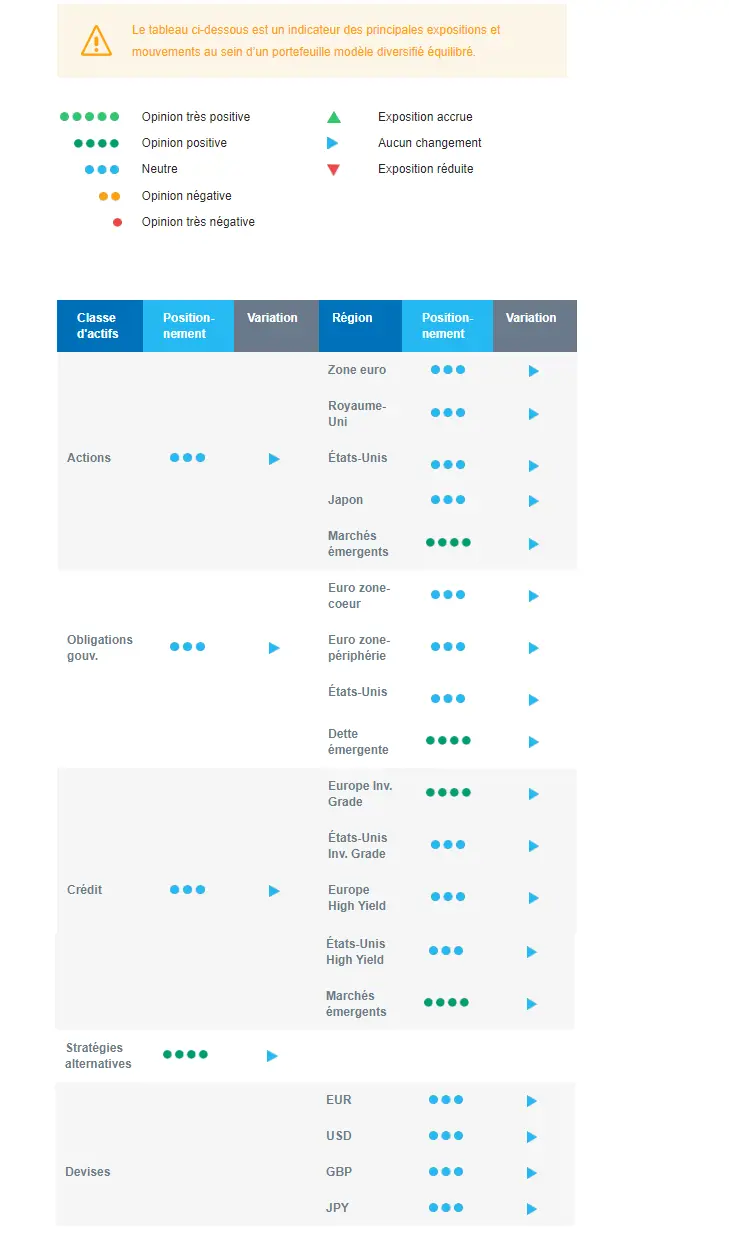Last week in a nutshell
- Uncertainty surrounding the liquidity crisis of struggling US local and regional banks continued to weigh on market sentiment.
- The Fed raised rates by 25bp and pointed to further tightening, either via restrictive bank credit or via higher rates.
- Flash PMIs at both sides of the Atlantic pointed to a significant strengthening in the services sector.
- Chinese President Xi Jinping and Russian President Vladimir Putin met in person and agreed on commodity trading.
What’s next?
- While financial vulnerability is the main focus for investors, inflation data releases in the US, the euro zone and Japan will be carefully watched.
- In the US and Europe, consumer and business confidence indicators are also due, giving an assessment for the start of the second quarter.
- Chinese industrial profits and March PMIs will be important updates on the state of the reopening following the end of the zero-Covid strategy.
- Several Fed, ECB and BoE central bankers will explain their latest rate hikes and give assessments on the potential trade-off between financial stability and price stability.
Investment convictions
Core scenario
- The action of the authorities to maintain public confidence in the banking system and the speed with which the current financial shock is resolved are key for our scenario.
- We read recent central bank decisions that there would be no pre-emptive rate cuts and we stick to our current economic scenario which is based on slow growth on both sides of the Atlantic, i.e., a soft landing.
- We have reduced our risk exposure last month as financial markets had increasingly priced in good news and increased our portfolio duration early March.
- Credit is a strong conviction for the start of 2023 since the carry that was reconstituted by the rise in yields in 2022 looks attractive. We are overweight Credit, including Emerging market debt.
- We see equity markets moving within a broad range: Limited to the upside by the actions of central banks, which will ensure that financial conditions do not ease too quickly if the economy is holding up well and supported by a faster monetary policy pivot if the economy is hit too hard by tightening credit conditions.
- We expect emerging markets to outperform as valuation is relatively more attractive while Asia keeps superior long-term growth prospects vs. developed markets, given that China’s re-opening is very quick.
- Euro zone activity was shielded by a fortuitous combination of a mild winter, a reduction in consumption thanks to targeted measures, increased gas storage and falling energy prices. Sentiment, labour market and consumption are holding up while inflationary pressures resurfaced. With the re-opening of China, Europe should likely resume its export growth.
- On a medium-term horizon, we expect Alternative investments to perform well.
Risks
- Financial stability risks have resurfaced recently and led the US to add liquidity into the financial system.
- The uncertainty linked to the financial shock and the potential credit crunch and central bank’s anti-inflation stance are capping the upside potential for risky assets.
- On the other hand, inflation is declining, and a slow but positive growth is limiting the market downside.
- As central banks become more data dependent, and the economy is still surprising on the upside, monetary policy could become more restrictive on both sides of the Atlantic.
- Among the upside risks, the Chinese re-opening is good news for the domestic and global growth as long as there is no global inflation spill over via a resurgence of commodity prices in the context of constrained supply.
Cross asset strategy
- Our multi-asset strategy is staying neutral amid the banking crisis’ induced volatility.
- We are neutral equities vs bonds. We have convictions in specific assets.
- Within regional equity preferences, we believe in the Emerging markets region, as valuation is relatively attractive and there is room for a catch-up vs. developed markets.
- In the current environment, we prefer defensive sectors, such as Health Care and Consumer Staples while a pause in the Tech sector appears warranted.
- The Health Care sector is expected to provide some stability: No negative impact from the war in Ukraine, defensive qualities, low economic dependence, innovation, and attractive valuations.
- In addition, the current context continues to favour companies with pricing power, which we find in the Consumer Staples segment.
- In the fixed income space, we currently have a neutral duration positioning as most asset classes have an attractive carry.
- European investment grade credit is one of our strongest convictions. We also have exposure to emerging debt.
- We have exposure to some commodities, including gold and commodity-related currencies, including the Canadian dollar.
- In our long-term thematics and trends allocation: We favour investment themes linked to the energy transition and keep Technology in our long-term convictions. We expect Automation and Robotisation to recover in 2023, and a growing interest in Climate and Circular Economy-linked sectors (such as Industrials and Technology).
Our Positioning
Our current positioning is neutral equities and neutral on bond duration, with a preference for Emerging markets. On the fixed income side, we have a constructive view on Investment Grade credit. In the context of robust growth and the reopening in China, we remain allocated to some commodities.

